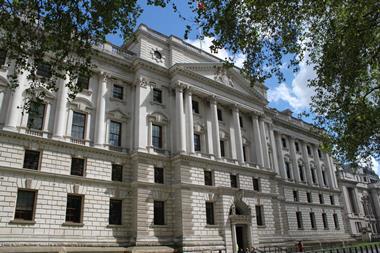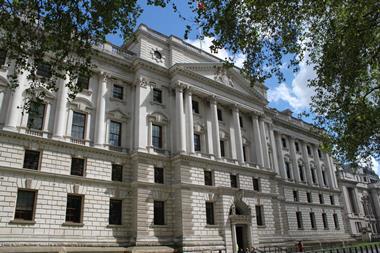The €12bn European green bond – the largest green bond ever issued – has attracted much interest from various European pension investors, as the issuance, which is part of the NextGenerationEU (NGEU) fund, was more than 11 times oversubscribed with demand of more than €135bn.
APG and PGGM, the Netherlands’ largest two pension investors, have invested €195m and €52m, respectively, in the first ever European green bond.
Varma, one of Finland’s two largest mutual pension insurance companies, was another of the investors in Tuesday’s inaugural green bond issue from the EU, along with ATP, Denmark’s statutory pension fund and Europe’s fourth biggest pension fund.
Lars Dreier Kristensen, ATP’s head of sustainable bonds, said: “Issuance of NGEU green bonds is an important step in financing a more sustainable, green and resilient Europe. With up to €250bn in issuance in the coming years, NGEU green bonds provide a high rated, liquid green alternative for fixed income investors.”
Varma and ATP’s investment size was not disclosed.
Outi Nissinen, senior portfolio manager at the €55bn earnings-related pension provider Varma, told IPE: “Yes, we participated in the inaugural EU green bond syndication. Our liquid government bond portfolio can hold supranational issuers for, for example, diversification purposes.”
Nissinen said: “Overall in our opinion the accomplishment of NGEU last year was essential in safeguarding the solidarity of EU in a situation when coronavirus hit different member states differently.”
She said the EU would be one of the largest green bond issuers globally, if not the largest.
“There was solid demand for the inaugural green bond and the syndication was heavily oversubscribed – this was also reflected in the pricing of the bond as it tightened a few basis points from the initial pricing guidance,” she said.
According to Oscar Jansen, who manages APG’s euro bond portfolio, the green bond issue underlines “Europe’s leading role in sustainable finance”.
It is not yet known how the proceeds of the inaugural green bond sale will be used. The European Commission pays out the money to the member states which have to come up with green spending plans themselves.
Jansen does not consider this a problem. On the contrary, he said: “As the proceeds can be used in multiple ways, we will be investing in a large and diverse array of green investments.”
Last year, APG and PGGM both invested in the EU’s SURE social bond programme, which was launched to alleviate the economic consequences of the pandemic.
Giving it a miss
Cardano, which manages the matching portfolios of a number of smaller Dutch pension funds, also took part in the SURE issue, but not in the EU green bond issuance.
“We did not take part in this issuance because demand exceeded supply by an exceptionally large margin. As a consequence, the yield on offer was not good enough for investors,” explained Rik Klerx, head of portfolio and treasury management at Cardano.
Metals industry fund PMT, the Netherlands’ third largest pension fund, also gave the issue a pass as it deemed the yield of 0.4% for a 15-year bond too low.
“The yield on offer was not attractive enough to include the bond in our off-benchmark allocation for this type of bonds,” a spokesperson told IPE.
NGEU is a temporary recovery instrument of over €800bn to support Europe’s recovery from the coronavirus pandemic “and help build a greener, more digital and more resilient Europe”, according to the Commission.
The Commission is raising capital on the markets between now and the end of 2026 to finance it.
Green bonds demand to remain robust despite inflation
Alexander Schubert, senior portfolio manager at Union Investment in Frankfurt, hailed the first EU green bond issuance as “a great success for the EU”, noting that the market has had time to prepare for it since it was announced in September.
Union Investment placed orders for the EU issuance of “almost three digit millions”, Schubert said, adding that the firm will continue to invest in future EU issuances of green bonds.
“We will invest in green bonds but also in the NGEU bonds that are not purely green. We want to support the EU as an issuer as we have a close dialogue with the EU one-one regularly,” he said.
Union Investment’s strategy is to allocate to safe investments like EU green bonds to replace more expensive German Bunds, Schubert said.
The yield of the EU bonds at the time of pricing the new bond was 45 basis points, 0.45%, against almost zero on the Bundesanleihe. “That is also why we like to invest very much in EU green bonds,” he said.
As with other issuances, there is greenium – the spread of a green bond to the issuer’s non-green curve. EU conventional bonds have a 0.2% coupon with maturity until 2036, traded at mid-swaps -8.4bps, Schubert said.
The new EU green bonds trade at mid-swaps -10.3bps, resulting in a 2bps lower yield, or greenium, Schubert added. The new issuance was priced at mid-swaps -8bps, after it was announced at mid-swaps -5bps.
“That means that the EU has priced the EU green bonds in line with the trajectory of the EU bond curve and it has given the market the possibility to find a greenium now of 2bps. I think a greenium of 2-3bps is fair,” he said.
“The greenium of the EU green bonds should be slightly lower than the German green bonds greenium, which is 4.5-6.4bps, but in the next year the greenium between German bonds and EU green bonds may reduce. That is my expectation and this is positive,” Schubert said.
Robust demand for green bonds should also not be massively affected by future higher bond yields resulting from inflation, Schubert added.

























No comments yet